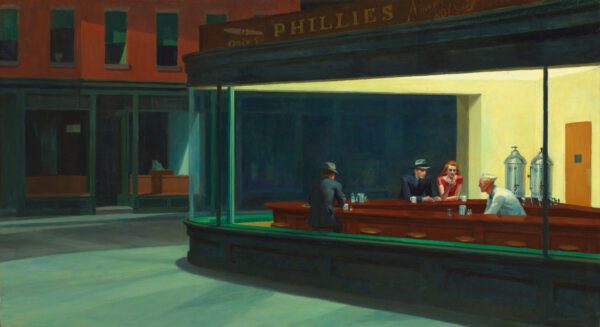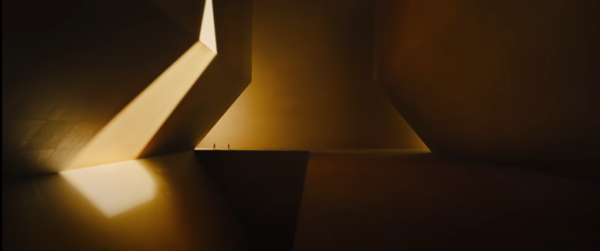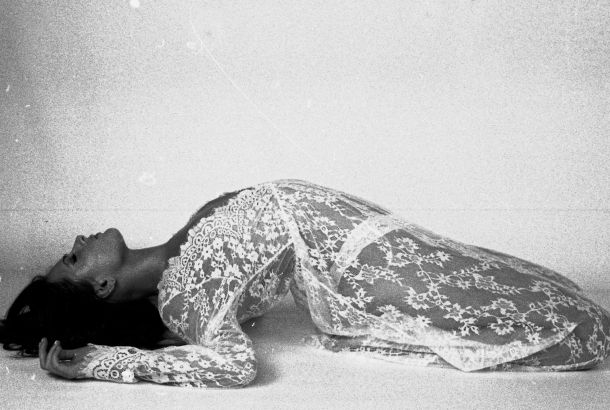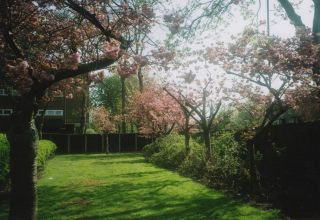Alone, in public: Finding solace in the city
By Anna Pirie

Moving (or returning) to a new city can invoke feelings of loneliness and isolation. This applies to those who have a vibrant social life, but also to those who prefer to keep to themselves. Many artists use their work to communicate emotions that are difficult to articulate with words. This article explores how Edward Hopper, an artist who was recently featured in the Students’ Union’s poster sale, does just that.
It is half one on a Wednesday afternoon at the Students’ Union building. I am queuing up amidst my fellow students to buy a £5 print of Edward Hopper’s most lauded painting, ‘Nighthawks’.
Created in 1942, the painting depicts a nighttime scene of a mostly-empty diner. Four figures (three customers and an employee) smoke and sip at their drinks, seemingly indifferent to each other’s existence.

When interviewed about the painting, Hopper commented, “unconsciously, probably, I was painting the loneliness of a large city.” The stock image of the painting, unceremoniously pasted on a display wall, is hidden by the crowd of students. I shove my earbuds in and wait for my turn to pay.
Hopper’s paintings gained a reputation for their depictions of modern city life. ‘Automat’ (1927) features a lone woman nursing a cup of coffee, the stark overhead lights unceremoniously thrusting her into the viewer’s attention.

While many of us may feel familiar with the painting’s sentiment of urban isolation, we can’t help but also be complicit in its observing, isolating gaze. As city residents, we may feel pushed out by the uncaring mass of others. We may also participate in this rejection, simply by existing as yet another member of the faceless crowd.
This brand of isolationism is typical in a great deal of Hopper’s works. I suspect the same may also be true of myself last week, alone at a bus stop hastily eating a McDonald’s sandwich. Whenever anyone walking past averted their gaze, I was unsure if I was being singled out as weird, or if I was just yet another person on the street, simply not worth the effort of acknowledgement.
Being from Newcastle, I originally believed that Manchester wasn’t too dissimilar from home. Yet, three weeks after moving, I can’t help feeling lost in the liveliness of the city; the clubs, cafes, apartments, supermarkets, and endless amounts of people.
Travelling on the packed Magic Bus; pushing my way through the crowd at University Place; the infinite eyes of the skyscrapers watching me as I scurry to and from my daily tasks. It has been an experience I did not fully ready myself for.
Hopper is far from the only artist to depict the loneliness one might feel within a city. Since industrialisation, writers have obsessed over the impurity of the urban landscape, and the falseness of its façade.
Award-winning British author Olivia Laing captures it perfectly in her book The Lonely City: Adventures in the Art of Being Alone:
“You can be lonely anywhere, but there is a particular flavour to the loneliness that comes from living in a city, surrounded by millions of people. One might think this state was antithetical to urban living, to the massed presence of other human beings, and yet mere physical proximity is not enough to dispel a sense of internal isolation.”
Notably, Hopper’s ‘Nighthawks’ famously influenced the look and feel of Ridley Scott’s 1982 film Blade Runner — and its sequel Blade Runner 2049 — both of which focus heavily on urban isolationism. Blade Runner also borrows heavily from noir fiction, a genre focused on rain-soaked cities, corrupt officials, and a lone-wolf protagonist.

Award-winning poet Sylvia Plath also contributed to this genre, expressing her hatred for the falseness of New York in The Bell Jar. In addition, poets Seamus Heaney and Ted Hughes gained popularity through their collective rejection of the city in favour of natural landscapes.
For a long time, cities have been the punching bag of the arts. However, consumers of art will always have the privilege of subjective interpretation. Staring up at my crumpled print of ‘Nighthawks‘, lovingly white-tacked to the wall of my bedroom, I feel somewhat comforted by its familiarity.
I can’t imagine that someone painting concrete blocks and linoleum floors with such care had a distaste for city life. Instead, Hopper’s work inspires the thought that there is beauty in everything, you just have to discover it. The same can be said for Manchester.







